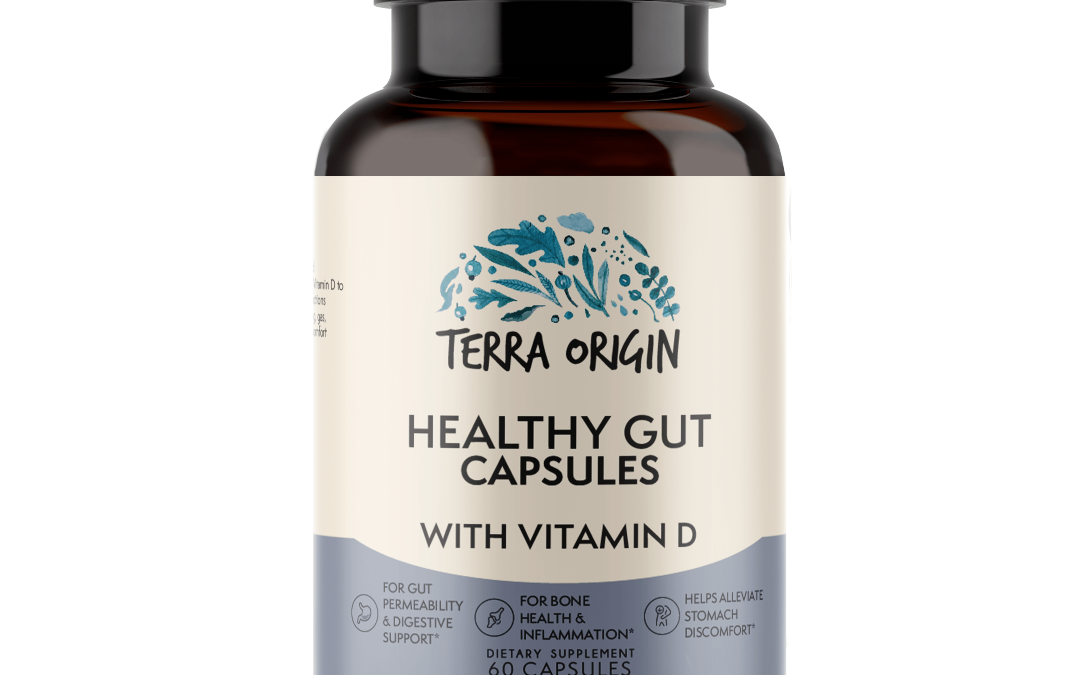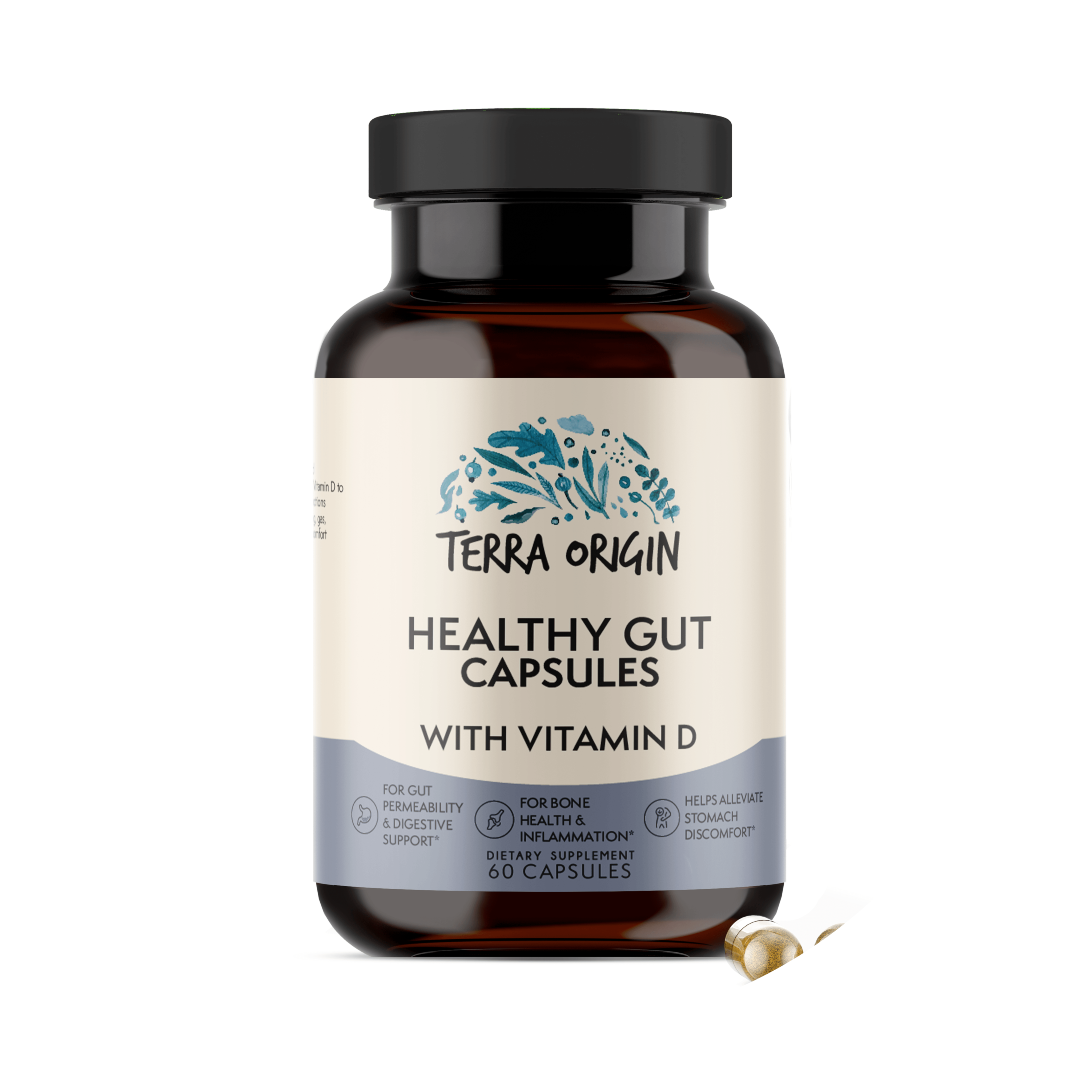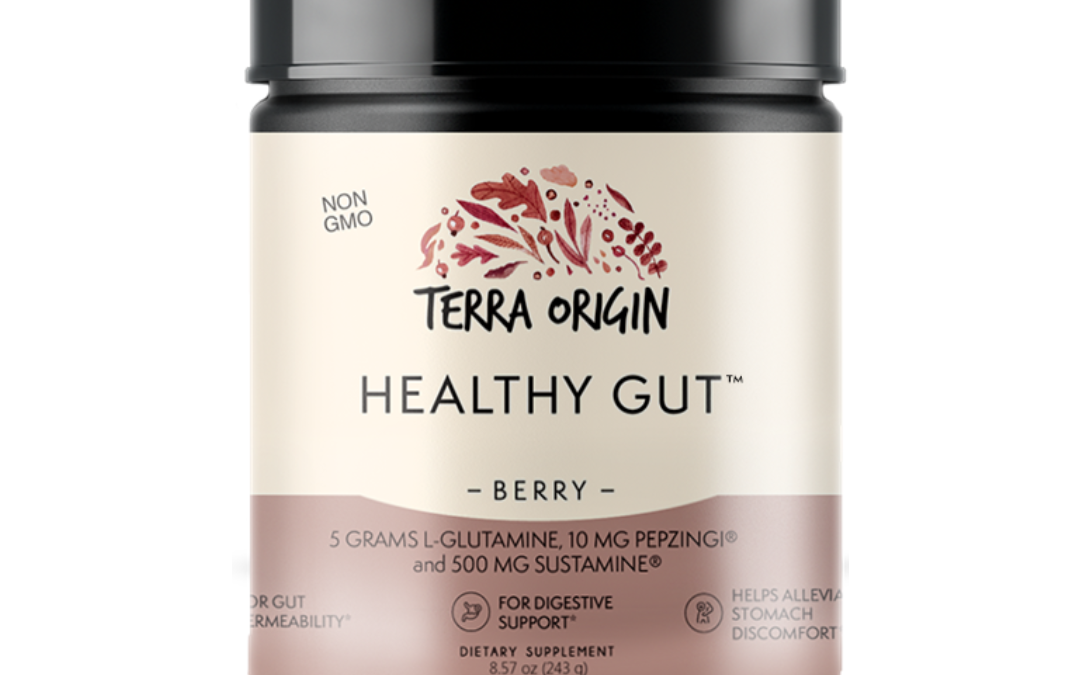
How Early Nutrition Shapes Lifelong Health – The First 1000 Days of Life
Child nutrition, Children's Health, Misc
The first 1000 days of life—beginning at conception and continuing through a child’s second birthday—represent one of the most critical windows of opportunity for shaping long-term health. During this intense period of growth and development, a baby’s brain, immune system, metabolism, and gut microbiome are forming rapidly. What happens in these early days doesn’t just affect infancy—it sets the stage for physical, cognitive, and emotional wellbeing for the rest of life.
As a parent or caregiver, you have a powerful role in shaping your child’s future through nutrition. The food choices made during pregnancy, breastfeeding, and the early years don’t just fuel immediate growth—they influence how a child learns, fights illness, and even how their body responds to stress decades later. It’s no exaggeration to say that early nutrition acts as a foundation for everything that follows.
Scientific research increasingly points to the first 1000 days of life as a golden opportunity to promote lifelong health. Proper nutrient intake during this window supports:
-
Rapid brain development, including the formation of critical neural connections
-
The establishment of a balanced gut microbiome, which impacts immunity and even mood
-
Strong immune resilience, reducing risks of allergies, infections, and chronic diseases
-
Long-term metabolic health, including a reduced risk of obesity, type 2 diabetes, and cardiovascular disease
This article will walk you through everything you need to know about early childhood nutrition—what nutrients matter most, when they’re needed, how the gut and brain are connected, and how you can support your child’s development every step of the way.
Whether you’re pregnant, breastfeeding, or preparing meals for your toddler, this guide is designed to empower you with knowledge, backed by science and tailored for real life.
2. Milestones of Brain Development in the First 1000 Days
During the first 1000 days of life, the brain grows more rapidly than at any other point in a person’s life. From the moment of conception through the toddler years, the brain undergoes extraordinary changes that lay the groundwork for intelligence, memory, behavior, and emotional regulation. Understanding the major milestones of this period highlights just how essential early-life nutrition truly is.
Prenatal Brain Development (Conception to Birth)
Brain development begins just three weeks after conception, making maternal nutrition critical from the very start of pregnancy. Key processes such as:
-
Neurogenesis (the formation of new neurons),
-
Cell migration (where neurons move to their correct positions), and
-
Synaptogenesis (the creation of connections between neurons)
are all occurring rapidly in the fetal brain.
The neural tube, which forms the foundation of the brain and spinal cord, closes by the end of the first month of pregnancy. This early milestone is heavily dependent on adequate maternal folate intake. Later in pregnancy, myelination (the formation of a protective sheath around nerves that allows for faster signal transmission) begins and continues well into childhood.
Key takeaway: What a pregnant mother eats—and whether she receives enough essential nutrients—can influence her baby’s brain structure and function long before birth.
Infant Brain Development (0–12 Months)
Once born, a baby’s brain doubles in size during the first year. This period is marked by:
-
An explosion of synaptic connections (up to 1 million new neural connections per second),
-
Ongoing myelination,
-
Increasing cognitive and sensory awareness.
The infant brain is highly plastic during this time, meaning it’s extremely responsive to environmental inputs—including nutrition. Breast milk, for instance, contains a perfect balance of fats, sugars, proteins, and bioactive compounds that support neural growth and protection. Nutrients like DHA, choline, and iron are especially important during this phase.
Stimulation, bonding, and early learning experiences also influence brain architecture—but nutrition provides the raw materials for these processes to happen effectively.
Toddler Brain Development (12–24 Months)
During the second year of life, the brain continues to grow and refine itself through a process called pruning, where unused connections are eliminated and important ones are strengthened. This helps the brain become more efficient and specialized.
Toddlers begin to exhibit:
-
Language acquisition,
-
Problem-solving skills,
-
Social interactions and emotional expression.
These abilities depend on the solid foundation laid in the previous months and are still highly sensitive to nutritional intake. A balanced diet rich in iron, zinc, omega-3 fatty acids, and vitamins A, D, B12 helps support ongoing brain development and emerging mental skills.
Why Timing Matters
Each phase of brain development depends on having the right nutrients at the right time. Nutritional gaps during key milestones—such as folate deficiency during neural tube formation, or iron deficiency during rapid growth—can lead to long-term developmental delays or cognitive deficits.
Early intervention is not just helpful—it’s vital.
In Summary
The first 1000 days are the brain’s most dynamic period of growth. From fetal neural tube closure to toddler cognitive leaps, each milestone relies on a steady supply of nutrients, environmental enrichment, and responsive caregiving. By supporting these milestones through thoughtful nutrition and care, we’re not just feeding a child—we’re building their future.
3. Essential Nutrients for Brain Development
The Brain’s Building Blocks in the First 1000 Days
Optimal brain development requires more than just calories—it demands a symphony of specific nutrients delivered at just the right time. These nutrients support everything from the creation of neurons to the smooth transmission of signals across the brain. Below are the most essential nutrients for brain development during the first 1000 days, along with their roles, sources, and the risks of deficiency.
DHA (Docosahexaenoic Acid)
Role:
DHA is a long-chain omega-3 fatty acid that makes up a large portion of the brain’s gray matter. It supports:
-
Neuronal membrane fluidity
-
Synapse formation
-
Memory, learning, and emotional regulation
Sources:
-
Fatty fish (salmon, sardines, mackerel)
-
Algae oil (vegan source)
-
Breast milk
-
Fortified infant formulas
Deficiency Risks:
Low DHA levels during pregnancy and infancy have been linked to reduced attention, learning difficulties, and poorer visual development.
Choline
Role:
Choline is crucial for:
-
Neurotransmitter (acetylcholine) production
-
Brain plasticity and learning
-
Formation of brain cells and protective membranes
Sources:
-
Eggs (especially the yolk)
-
Liver and red meat
-
Soybeans, legumes
-
Breast milk
Deficiency Risks:
Choline deficiency during pregnancy may impair fetal brain development and increase the risk of neural tube defects, even if folate intake is adequate.
Iron
Role:
Iron is essential for:
-
Oxygen transport to the brain
-
Neurotransmitter synthesis
-
Myelination and energy metabolism in brain cells
Sources:
-
Red meat, liver
-
Lentils, beans
-
Iron-fortified cereals
-
Spinach (with vitamin C to enhance absorption)
Deficiency Risks:
Iron deficiency anemia in infancy is associated with delayed cognitive and motor development, poor attention, and behavioral problems.
Zinc
Role:
Zinc contributes to:
-
Synaptic transmission
-
Brain cell signaling and growth
-
Neuroprotection and antioxidant defense
Sources:
-
Meat and shellfish (especially oysters)
-
Whole grains, seeds, nuts
-
Dairy products
Deficiency Risks:
Zinc deficiency can impair neurodevelopment, immune function, and increase susceptibility to infections.
Folate (Vitamin B9)
Role:
Folate is vital for:
-
DNA synthesis and cell division
-
Proper closure of the neural tube during early fetal development
-
Neurogenesis and mood regulation
Sources:
-
Leafy greens (spinach, kale)
-
Citrus fruits
-
Lentils and legumes
-
Fortified grains and supplements
Deficiency Risks:
Inadequate folate intake during the first trimester can result in neural tube defects such as spina bifida. It can also influence brain volume and emotional behavior later in life.
Iodine
Role:
Iodine is needed for:
-
Thyroid hormone production
-
Regulation of brain growth and metabolism
-
Cognitive performance and IQ
Sources:
-
Iodized salt
-
Seaweed (kelp, nori)
-
Dairy products
-
Fish and eggs
Deficiency Risks:
Iodine deficiency is the leading preventable cause of intellectual disabilities worldwide. Even mild deficiency during pregnancy may lower a child’s IQ.
Key Takeaway
These six nutrients work together to build, connect, and protect the developing brain. A deficiency in even one can derail key processes like memory formation or emotional regulation. That’s why a varied, nutrient-rich diet before, during, and after pregnancy—and into toddlerhood—is essential for building the foundation of a healthy brain.
4. The Gut-Brain Axis in Early Life
How the Gut Shapes Brain and Immune Development
Over the past decade, science has revealed an extraordinary truth: our gut and brain are deeply connected. This relationship, known as the gut-brain axis, begins forming in the womb and plays a crucial role in early childhood development. A healthy gut microbiome doesn’t just aid digestion—it influences immune function, mood regulation, and even cognitive development.
The Gut-Brain-Immune Triad
The gut and brain communicate constantly through:
-
The vagus nerve, which sends signals between the gut and brain.
-
Neurotransmitters (like serotonin) produced in the gut.
-
Immune messengers (cytokines) influenced by gut bacteria.
In fact, up to 90% of serotonin—a key mood-regulating neurotransmitter—is produced in the gut, not the brain. The gut microbiome also helps shape the immune system’s development and modulates inflammation, which is vital for protecting the developing brain.
Key idea: Supporting gut health early on helps support mental health, immune balance, and cognitive function.
How the Gut Microbiome is Established
1. Mode of Delivery: Vaginal Birth vs. C-Section
-
During vaginal birth, a newborn is exposed to beneficial maternal bacteria (like Lactobacillus), which helps seed the gut microbiome.
-
In contrast, C-section babies are colonized with skin and hospital bacteria, which may delay microbiome maturity and increase allergy or obesity risks.
2. Breastfeeding vs. Formula Feeding
-
Breast milk is rich in:
-
Prebiotics (human milk oligosaccharides) that feed beneficial bacteria
-
Probiotics (live bacteria like Bifidobacterium)
-
Immune-modulating compounds
-
-
Formula-fed babies may have a more diverse, but less stable, microbiome early on.
3. Introduction of Solid Foods (Around 6 Months)
-
Introducing a variety of fiber-rich foods, fruits, vegetables, and fermented foods helps increase microbial diversity.
-
Diverse gut flora is linked to reduced allergies, better digestion, and stronger immunity.
4. Antibiotic Use in Infancy
-
Antibiotics save lives, but overuse—especially in the first year—can disrupt gut bacteria balance.
-
This may raise the risk of:
-
Asthma and eczema
-
Digestive issues
-
Weight gain and insulin resistance
-
-
If antibiotics are needed, consider probiotic support under medical supervision.
Critical Windows for Gut Programming
The gut microbiome is most adaptable during the first three years of life. What happens during this period can influence a child’s:
-
Risk for autoimmune diseases (like type 1 diabetes)
-
Development of food intolerances
-
Propensity for mental health conditions later on
Research shows that children with diverse and well-balanced microbiomes tend to have stronger cognitive skills and emotional regulation.
Supporting a Healthy Gut-Brain Axis
To nurture your child’s gut:
-
Prioritize vaginal birth when medically possible
-
Breastfeed if you can
-
Introduce diverse, fiber-rich whole foods after 6 months
-
Avoid unnecessary antibiotics and harsh disinfectants
-
Spend time in nature (exposure to natural microbes helps!)
In Summary
The gut-brain axis is a powerful force in a child’s early development. Establishing a healthy gut microbiome in the first 1000 days lays the groundwork for lifelong immunity, mental well-being, and cognitive performance. Supporting gut health is one of the most effective—and natural—ways to support a child’s brain.
5. Nutrient Timing Across the 1000 Days
Tailoring Nutrition to Each Developmental Stage
While all nutrients are important, when they’re delivered during the first 1000 days is just as important as what is delivered. Each phase—pregnancy, infancy, and toddlerhood—has unique nutritional needs that support different aspects of growth. Meeting these needs at the right time ensures proper organ development, brain maturation, and metabolic programming.
Pregnancy (Conception to Birth)
Laying the Foundation for Life
What a mother eats during pregnancy directly fuels her baby’s development. Key nutrients needed during pregnancy include:
-
Folate: Prevents neural tube defects, supports DNA synthesis (especially critical in the first trimester).
-
Iron: Supports increased blood volume and oxygen transport to the fetus.
-
DHA: Promotes brain and retinal development.
-
Iodine: Essential for thyroid hormone production, supporting brain growth.
-
Choline: Enhances brain plasticity and memory formation.
Tips for Expecting Mothers:
-
Take a high-quality prenatal vitamin.
-
Prioritize whole foods like leafy greens, fatty fish, legumes, nuts, and eggs.
-
Stay hydrated and monitor iron levels, especially in the third trimester.
Birth to 6 Months
The Exclusive Breastfeeding Window
The first six months are best supported by exclusive breastfeeding, if possible. Breast milk is perfectly tailored to the baby’s needs, containing:
-
Essential fatty acids (DHA and ARA) for brain development
-
Antibodies and immune factors to build immunity
-
Prebiotics and probiotics to support gut health
-
Digestible proteins and enzymes for easy absorption
For formula-fed babies, choosing iron-fortified, DHA-enriched formulas can help close nutritional gaps.
Pro tip: Even if breastfeeding isn’t possible long-term, colostrum (the early milk) is especially rich in immune-supportive compounds and is highly beneficial in the first days of life.
6 to 12 Months
Complementary Feeding Begins
Around 6 months, most babies are ready to begin complementary feeding. This doesn’t replace breast milk or formula but adds solid foods to provide additional energy and nutrients.
Nutritional priorities:
-
Iron: From foods like pureed meats, lentils, egg yolks.
-
Zinc: Introduced through meats and whole grains.
-
Healthy fats: From avocado, olive oil, and oily fish.
-
Vitamin C: From fruits, to support iron absorption.
Best practices:
-
Offer one new food at a time.
-
Emphasize nutrient density over calories.
-
Include pureed or mashed foods with diverse textures and colors.
12 to 24 Months
Transitioning to the Family Table
By the second year, toddlers transition to eating family foods and should begin building lifelong eating habits. This is a critical window for shaping food preferences and encouraging dietary variety.
Key nutrition goals:
-
Balanced intake of:
-
Proteins (chicken, beans, tofu)
-
Whole grains (oats, brown rice)
-
Fruits and vegetables (5 colors a day)
-
Healthy fats (nut butters, seeds, fatty fish)
-
-
Continue offering iron-rich foods, as iron needs remain high.
-
Ensure adequate calcium and vitamin D for bone development.
-
Encourage self-feeding to support motor and sensory development.
Common concerns:
-
Picky eating is normal—repetition and modeling are key.
-
Avoid sugar-sweetened drinks and processed snacks.
-
Continue breastfeeding or provide full-fat dairy for healthy fat intake.
Timing Summary Table
| Stage | Key Nutrients | Key Food Sources |
|---|---|---|
| Pregnancy | Folate, Iron, DHA, Choline, Iodine | Leafy greens, eggs, fish, liver, iodized salt |
| 0–6 Months | DHA, antibodies, prebiotics | Breast milk / fortified formula |
| 6–12 Months | Iron, Zinc, Healthy Fats, Vitamin C | Meat, legumes, avocado, fruits |
| 12–24 Months | Balanced macronutrients, calcium, fiber | Whole grains, dairy, protein, vegetables |
In Summary
Every phase of the first 1000 days builds upon the last. Meeting each stage’s specific nutritional needs supports optimal brain, gut, immune, and metabolic development. With the right timing, nutrition becomes one of the most powerful tools for lifelong health.
6. Supporting the Immune System Early On
How Nutrition Shapes a Child’s Immune Resilience
A strong immune system is a child’s best defense against infections, allergies, and chronic illness—and its foundation is built early in life. In fact, the immune system is developing in parallel with the brain and gut during the first 1000 days, making nutrition a key player in immune programming.
The Immune System Begins Before Birth
During pregnancy, a mother’s nutrition directly influences the development of her baby’s immune system. Essential nutrients and compounds pass through the placenta and affect:
-
Immune cell development
-
Inflammatory balance
-
The baby’s microbiome and immune “education”
For example, Vitamin D deficiency in pregnancy has been linked to a higher risk of asthma and autoimmune disorders in children. Similarly, zinc and iron are needed for fetal immune cell function and development.
Postnatal Immune Support: Breast Milk and Beyond
After birth, breast milk becomes the gold standard for immune protection. It contains:
-
Antibodies (IgA) that coat the baby’s intestinal lining and block pathogens
-
Lactoferrin to fight harmful bacteria and viruses
-
Oligosaccharides that feed beneficial gut bacteria
-
Anti-inflammatory cytokines that modulate immune responses
Breastfed babies tend to have lower rates of:
-
Respiratory infections
-
Gastrointestinal illness
-
Allergies and eczema
-
Type 1 diabetes and other autoimmune conditions
Key Immune-Supporting Nutrients in Early Life
1. Vitamin D
-
Function: Supports innate and adaptive immunity, modulates inflammation.
-
Sources: Sunlight exposure, supplements, fortified dairy, fatty fish.
-
Tip: Breastfed infants may need additional Vitamin D drops (400 IU/day) as recommended by pediatricians.
2. Zinc
-
Function: Essential for immune cell growth and wound healing.
-
Sources: Meat, seeds, beans, fortified cereals.
3. Vitamin A
-
Function: Supports the integrity of mucosal barriers (lungs, gut), and antibody responses.
-
Sources: Sweet potatoes, carrots, liver, leafy greens.
4. Iron
-
Function: Helps white blood cells fight infections and supports energy for immune processes.
-
Sources: Red meat, legumes, fortified infant cereals.
5. Probiotics and Prebiotics
-
Function: Promote healthy gut flora, which “trains” the immune system.
-
Sources: Yogurt, kefir, sauerkraut, fiber-rich fruits and vegetables, breast milk.
Avoiding Early Immune Stressors
Certain early-life exposures may overburden or improperly shape the immune system:
-
Overuse of antibiotics: Can wipe out beneficial bacteria.
-
Excess hygiene: May limit microbial exposure necessary for immune “training.”
-
Ultra-processed foods: Can increase gut permeability and chronic inflammation.
Proactive strategies:
-
Let babies explore safe, natural environments.
-
Prioritize whole foods over processed snacks.
-
Be cautious with early introduction of sugar or refined carbs.
Allergy and Autoimmunity Prevention
Introducing common allergens (e.g. peanut, egg) between 6–12 months may actually reduce the risk of food allergies. This is best done:
-
Gradually
-
With supervision
-
When the child is developmentally ready
Additionally, a diverse gut microbiome in infancy is associated with reduced rates of eczema, asthma, and other atopic conditions.
In Summary
The immune system needs just as much nutritional attention as the brain. From maternal Vitamin D and zinc to postnatal probiotics and immune-supportive foods, early nutrition helps shape a child’s defenses for life. A well-fed immune system is not only more resilient in childhood—it is better equipped for adulthood too.
7. Long-Term Benefits of Optimal Early Nutrition
How Early Feeding Shapes a Lifetime of Health
Nutrition during the first 1000 days doesn’t just impact the here and now—it shapes the rest of a person’s life. From school performance to chronic disease risk, the way a child is nourished in early life leaves long-lasting “metabolic fingerprints.” This concept is often referred to as “metabolic programming” or “developmental origins of health and disease” (DOHaD).
Let’s explore how the right start in life sets the stage for long-term health across multiple domains.
1. Cognitive Performance and School Readiness
Proper nutrition in early life is closely tied to:
-
Higher IQ
-
Better language development
-
Improved executive function (attention, memory, self-control)
-
Higher academic achievement later in school
DHA, iron, choline, and iodine are especially important for brain architecture and neurotransmitter function. Research shows that children who were breastfed and adequately nourished in infancy tend to perform better on cognitive tests, even years later.
Example: A study published in The Lancet found that stunted growth due to malnutrition in early childhood was linked to significantly lower school performance at age 8.
2. Immune Resilience Across the Lifespan
A strong start supports a stronger immune system for life. Children who receive adequate vitamin D, zinc, and prebiotic-rich foods in early life:
-
Experience fewer infections in childhood
-
Are less prone to asthma, allergies, and eczema
-
Show better vaccine responses
-
Have reduced risk of developing autoimmune diseases like type 1 diabetes or inflammatory bowel disease
Additionally, a balanced microbiome built in infancy continues to educate the immune system into adulthood.
3. Metabolic Health and Weight Regulation
Poor nutrition in early life—whether due to undernutrition or overfeeding with processed foods—can increase the risk of:
-
Childhood obesity
-
Insulin resistance
-
Type 2 diabetes
-
Cardiovascular disease
In contrast, balanced nutrition in the first 1000 days helps regulate:
-
Appetite control
-
Insulin sensitivity
-
Healthy fat storage
-
Cholesterol and blood pressure
Protein quality, fiber intake, and healthy fats (like omega-3s) all play a role in programming metabolic health from infancy onward.
4. Mental Health and Emotional Well-Being
The link between early nutrition and mental health is now well documented. Nutrient deficiencies—particularly in omega-3s, iron, vitamin D, zinc, and B vitamins—have been associated with:
-
Increased risk of depression
-
Higher likelihood of anxiety disorders
-
Greater prevalence of behavioral and attention difficulties
A disrupted microbiome early in life may also affect the gut-brain axis, increasing the risk for neurodevelopmental and mood disorders.
Key point: Nourishing the mind starts with nourishing the body.
5. Epigenetic and Generational Effects
Emerging research suggests that early nutrition doesn’t just affect the child—it can influence the health of future generations through epigenetic changes. These are heritable changes in gene expression triggered by environmental factors such as diet.
For example:
-
A mother’s poor nutrition during pregnancy may “switch on” genes that increase her child’s risk of obesity.
-
On the flip side, nutrient-dense diets can activate protective genes related to metabolism, immunity, and brain development.
6. Societal and Economic Impact
On a larger scale, investing in early nutrition reduces:
-
School dropout rates
-
Healthcare costs
-
Long-term disease burden
According to the World Bank, every $1 invested in nutrition during the first 1000 days returns up to $16 in long-term economic benefits, thanks to improved productivity and reduced healthcare costs.
In Summary
The benefits of optimal early nutrition echo across a lifetime—boosting cognitive abilities, fortifying the immune system, protecting against chronic illness, and even influencing emotional stability. By giving children a strong nutritional start, we’re investing not just in their health, but in their potential.
9. Practical Tips for Parents
How to Support Healthy Development at Home
Even with the best intentions, feeding a baby or toddler can be overwhelming—especially when juggling daily responsibilities. These practical tips can help you confidently support your child’s development with ease and consistency.
Food Variety: Sample Meal Ideas by Age
Variety is key to providing a broad spectrum of nutrients and shaping lifelong eating habits. Here are some sample ideas:
6–12 Months (pureed/mashed textures)
-
Breakfast: Mashed avocado + breastmilk or formula
-
Lunch: Pureed lentils + carrot + a dash of olive oil
-
Snack: Banana or cooked pear mash
-
Dinner: Pureed chicken + sweet potato
12–24 Months (finger foods and self-feeding)
-
Breakfast: Scrambled egg + sliced banana
-
Lunch: Soft-cooked quinoa with veggies + shredded chicken
-
Snack: Full-fat plain yogurt + berries
-
Dinner: Brown rice + steamed broccoli + salmon flakes
Tips:
-
Introduce new foods slowly, but persistently. It can take 10+ exposures for a child to accept a new taste.
-
Aim for 3–5 different colors on the plate daily.
-
Avoid added sugars and highly processed snacks.
How to Read Labels for Baby and Toddler Food
Not all baby food is created equal. Here’s how to spot healthy options:
-
Look for:
-
Simple ingredient lists (5 ingredients or fewer)
-
No added sugar or salt
-
Whole food ingredients (e.g., “sweet potato” not “sweet potato flavor”)
-
Fortification with iron, vitamin D, or DHA
-
-
Avoid:
-
Artificial flavors, preservatives, or dyes
-
Excessive fruit purees (often sugar-heavy)
-
Juice concentrates
-
Tip: If you don’t recognize an ingredient, it probably doesn’t belong in baby food.
Supplementation Guidance: When and Why
While whole foods are ideal, some nutrients may need supplementation during the first 1000 days.
| Nutrient | When to Supplement | How |
|---|---|---|
| Vitamin D | For all breastfed infants | 400 IU daily drops |
| Iron | At risk of anemia or low intake | Drops or iron-rich solids |
| DHA | Formula-fed babies, low intake | DHA-enriched formula or drops |
| Vitamin B12 | If mother is vegan/vegetarian | As advised by pediatrician |
| Probiotics | After antibiotics or colic | Infant-specific strains |
Always consult your pediatrician before starting supplements.
Encouraging Gut Health Naturally
A healthy gut supports immunity and brain development. These simple habits promote microbial diversity:
-
Fermented foods (age-appropriate): Plain yogurt, kefir, miso, sauerkraut
-
Fiber-rich plants: Oats, bananas, legumes, soft veggies
-
Outdoor play: Soil exposure, pet interaction, and nature time boost immune education
-
Limit unnecessary antibiotics and harsh cleaning agents
10. When to Seek Help or Professional Advice
Even with the best nutrition, every child is unique. Knowing when to get help can make a huge difference.
Signs of Nutritional Gaps or Developmental Delays
Watch for:
-
Poor growth (dropping percentiles)
-
Pale skin or fatigue (possible iron deficiency)
-
Delayed motor skills or speech
-
Chronic constipation or frequent infections
-
Lack of interest in food or persistent feeding refusal
Importance of Working with Pediatricians and Nutritionists
You don’t have to navigate this alone. Healthcare professionals can:
-
Identify deficiencies through growth charts, blood tests, or dietary assessments
-
Offer personalized supplementation plans
-
Guide you through safe allergen introduction and special diets
What to Expect from Professional Assessments
-
Pediatric checkups: Weight, height, head circumference tracking
-
Feeding assessments: Observation of chewing, swallowing, and self-feeding
-
Bloodwork (if needed): Iron, vitamin D, B12, thyroid levels
-
Referrals: To speech, occupational, or feeding therapists when appropriate
Early action leads to better outcomes. Trust your instincts and ask questions.
11. Culturally-Inclusive and Budget-Friendly Nutrition
Healthy eating shouldn’t depend on location or income. Families everywhere can raise well-nourished children—culturally and affordably.
Navigating Nutrition Across Different Cultures
Every culture offers nutrient-rich traditional foods.
-
Middle Eastern: lentils, hummus, olive oil, dates
-
Asian: rice, tofu, miso, fermented vegetables
-
African: sweet potato, beans, millet, leafy greens
-
Latin American: avocado, plantains, corn, beans
Celebrate your food heritage while introducing balanced meals.
Making Whole Food Choices on a Budget
-
Buy in bulk (oats, rice, lentils, frozen veggies)
-
Choose seasonal produce
-
Use canned (no salt/sugar) or frozen options
-
Cook in batches and freeze meals
Avoid “baby-specific” marketing hype—real, whole food is often better and cheaper.
Family Mealtime Habits and Modeling Healthy Behavior
Children learn by watching:
-
Sit and eat together regularly
-
Show excitement about healthy foods
-
Avoid pressure—offer, don’t force
-
Include kids in meal prep (even toddlers can stir or sort veggies)
Positive food associations last a lifetime.
12. Conclusion + Call to Action
The first 1000 days offer a rare, powerful chance to shape your child’s brain, body, and immune system for life. Nutrition during this window impacts everything from how your child learns and grows to how resilient they become as adults.
By focusing on:
-
Nutrient-rich foods,
-
Responsive feeding,
-
Gut-friendly habits,
-
And early intervention when needed—
—you’re giving your child one of the best starts possible.








